User Manual
Overview
Openfde(Open Fusion Desktop Enviroment) is a new open-source desktop environment that combines Linux and Android by integrating the unified graphics and API design of AOSP into the Linux system foundation.
OpenFDE features the following characteristics:
- It can natively run various types of Android and Linux applications.
- You can use mouse input to interact with Android applications in the desktop environment.
- Developer and Unified API.
- Shared networking between Android and Linux.
- Efficiently combining Android file access and Linux file access in a unified manner that prioritizes both efficiency and security.
- OpenFDE provides an Android development environment and platform, allowing developers to directly perform mobile application development on OpenFDE.
For instructions on downloading and installing OpenFDE, please refer to the Quick Guide.
1. Customizable Features
1.1 Start Menu
Click on the OpenFDE icon in the bottom-left corner of the desktop and open the application menu. There will display a list of installed applications, including system default apps (Gallery, File Manager, Calendar, Clock, etc.) and installed third-party applications.
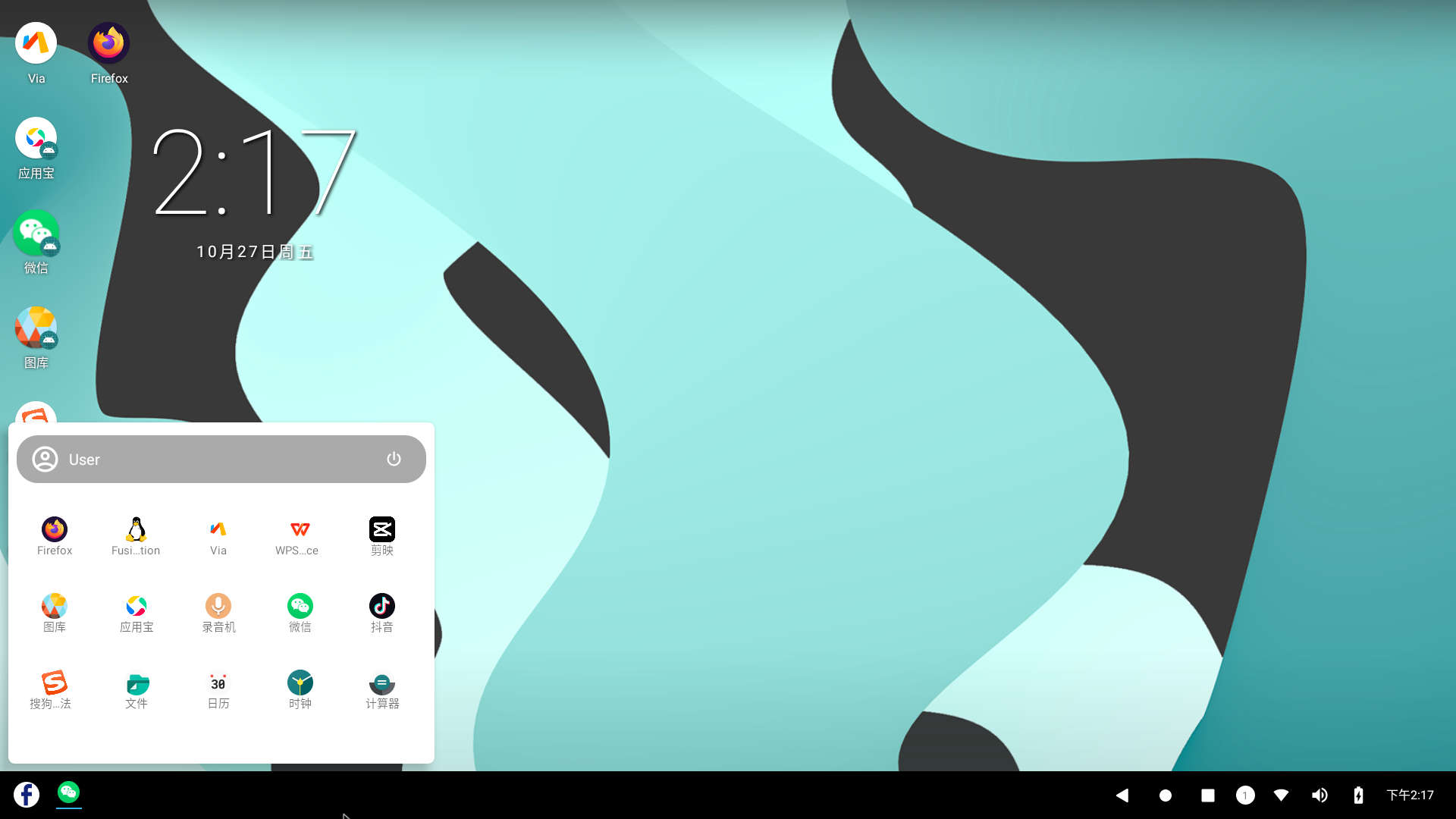
- The application menu supports app search, allowing users to quickly find and open the desired application by entering its name in the search bar.
- The application menu supports adding applications to the desktop as shortcuts.
1.2 Taskbar
The taskbar is located at the bottom of the desktop screen and is used for quickly launching applications. It supports single-clicking on icons, right-clicking with the mouse, or dragging applications.
The taskbar displays the currently open applications. Additionally, application icons can be pinned to the taskbar for quick access and launching.

1.3 Status Bar
The status bar displays the current system status and is located at the bottom-right of the screen. It primarily shows the following system statuses:
- network status
- voice status
- current time
The status bar also includes the following functional buttons:
- Back button: Clicking the back button allows you to return to the previous step of an application.
- Recent apps button: Displays recently used applications.
- Show desktop button: Clicking this button directly displays the desktop.
The status bar also includes the notification center and quick settings, which display current system notifications, including app notifications and system notifications. Clicking the large circle button on the status bar (with a number icon) will pop up the notification center and quick settings panel. The icons from left to right represent the following functions:

- Notification Center: Displays detailed notification content.
- Screenshot: Clicking it allows you to directly take a screenshot, and it supports editing the captured image.
- Screen recording: Clicking it will bring up a screen recording popup, and after confirming "Start," you can begin recording your screen.
- Quick settings: Clicking it will navigate to the Settings menu, allowing you to quickly access system settings.
1.4 Network
OpenFDE supports network interoperability between Linux and Android systems, allowing them to share network configurations such as limited networks, VPNs, and more.
- Wired network settings: When a user connects an Ethernet cable to their Linux system and configures the IPv4 and DNS information, there is no need to connect to WLAN again in the Android system.
- VPN settings: Users only need to configure the VPN information on either the Linux or Android side, and they can directly use that VPN on the other system.
1.5 Input Method
OpenFDE supports the built-in iFlytek Voice Input Method. Users can add new languages, input methods, and keyboards in the Settings -> System -> Language and Input section.
A tip: If you encounter a problem similar to the input box in the figure below that covers the text content in the process of using the iFlytek Voice Input Method, you can hover the mouse over the input method prompt word box, and then press and hold the left and right mouse buttons at the same time, so that you can drag the input method prompt word box to other positions.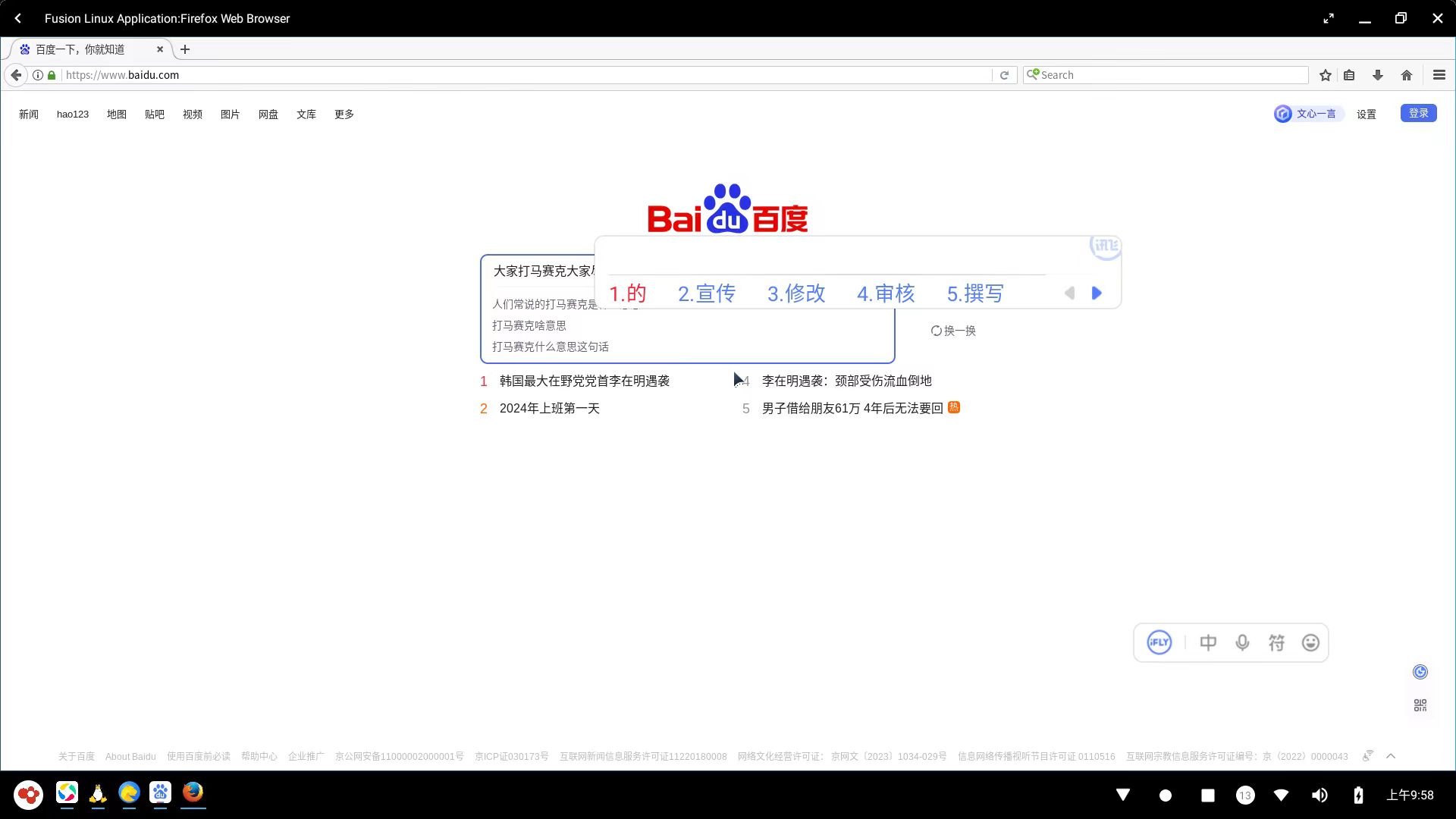
Furthermore, during usage, you may have already finished typing, but the predictive text box of the input method still appears, as shown in the image below:

For this situation, it is because the predictive text feature of the Xunfei input method is enabled. It is recommended to disable the predictive text feature of the Xunfei input method.

2. Applications
2.1 Install applications
The application installation includes two methods: system pre-installation and download installation online.
pre-installed applications
OpenFDE comes with pre-installed common software applications, including Gallery, Voice Recorder, File Manager, Calendar, Clock, Calculator, Music Player, iFlytek Voice Input Method, and Via Browser. Users can directly use these applications after installing the OpenFDE environment
download applications online
For Android applications, users can utilize the Via Browser to download various software application installation packages online. The downloaded APK installation packages are stored in the Download directory of the Android file system. To begin the installation, simply double-click the APK installation package within the current download directory.
2.2 Shortcut
OpenFDE supports multiple methods for adding application shortcuts.
- Upon installation completion, applications will automatically add shortcut icons to the desktop. By long-pressing the shortcut icon on the desktop with a mouse, you can choose to "Open" the application or select "Remove" to delete the application shortcut.
- Indeed, installed applications will also be automatically added to the Start Menu as shortcuts. Users can simply click on the application icon in the Start Menu to quickly open the software application.
2.3 Fullscreen
For opened applications, OpenFDE supports standard display, maximize, minimize, and fullscreen modes.
3. Linux Fusion Application
3.1 overview
OpenFDE is based on a standard Linux system foundation and supports running native Linux applications on the Android system. This includes, but is not limited to, existing Linux GUI and command-line applications.
3.2 Linux Application Lists
Clicking the penguin icon Fusion Linux Application in the Start menu opens a separate window for the Linux Fusion Application. The Linux Fusion Application displays a list of Linux applications, including support for running Linux GUI terminals such as MATE Terminal and Tabby.
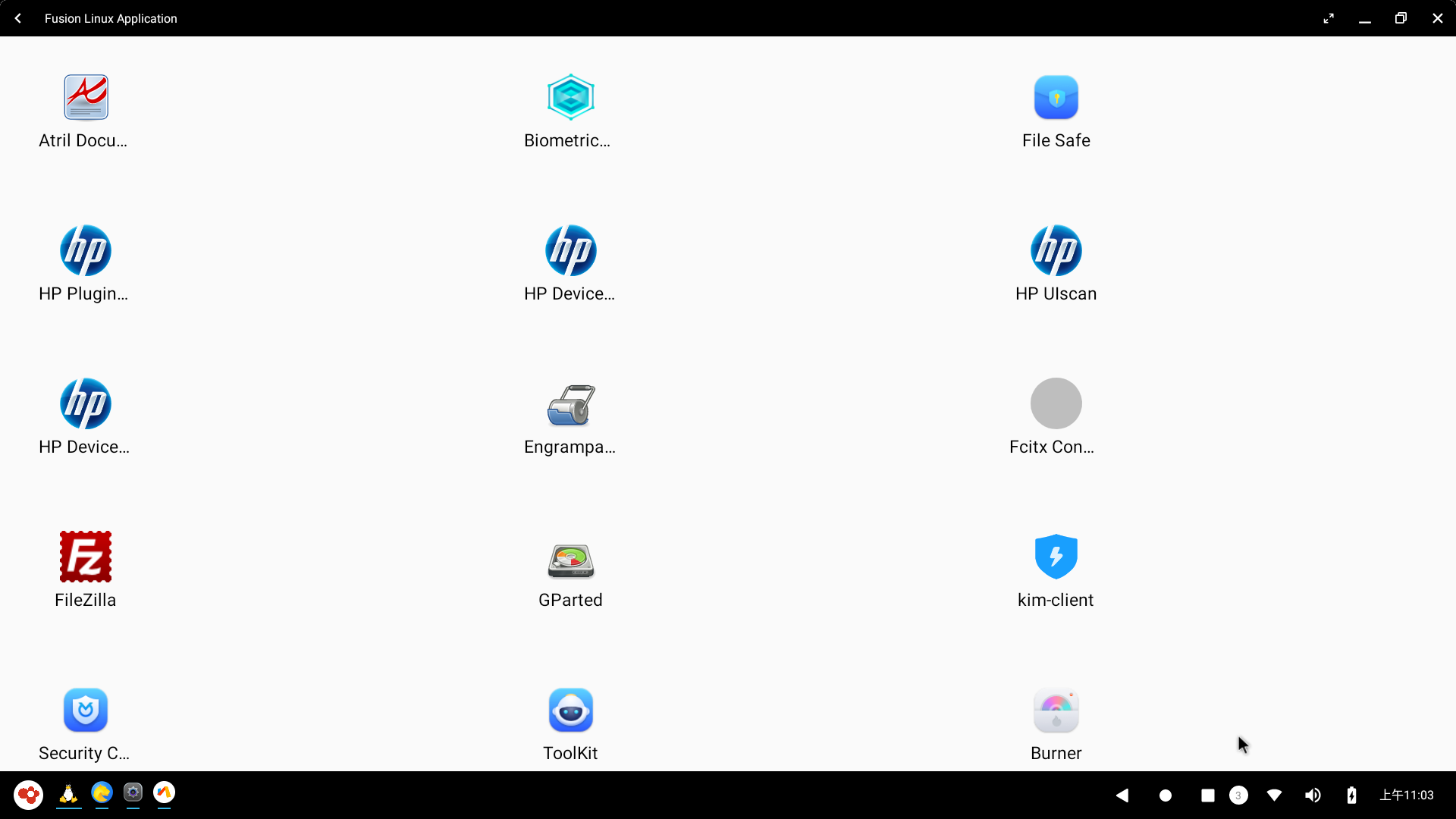
Users can use terminal commands in the Linux terminal application to install Linux applications. Once the application is successfully installed, it will directly appear in the application list of the Linux Fusion Desktop.
4.3 Config Network
Users can click on the OpenFDE icon in the bottom left corner and open Start Menu, Fusion Linux Application to find the Linux Settings. In the Linux Settings, you can configure the network settings for the system.
4.3.1 Wired Network Configuration
In the wired network settings, click on Advanced Settings. A pop-up window titled "Ethernet Settings" will appear on the right side.
- Add a New Wired Network: To add a new wired network connection, click on the "+" button located in the bottom left corner.
- Configure an Existing Wired Network: select the desired wired network connection, then click on the Settings button located in the bottom left corner. This will open a window where you can modify the configuration of the current network connection.
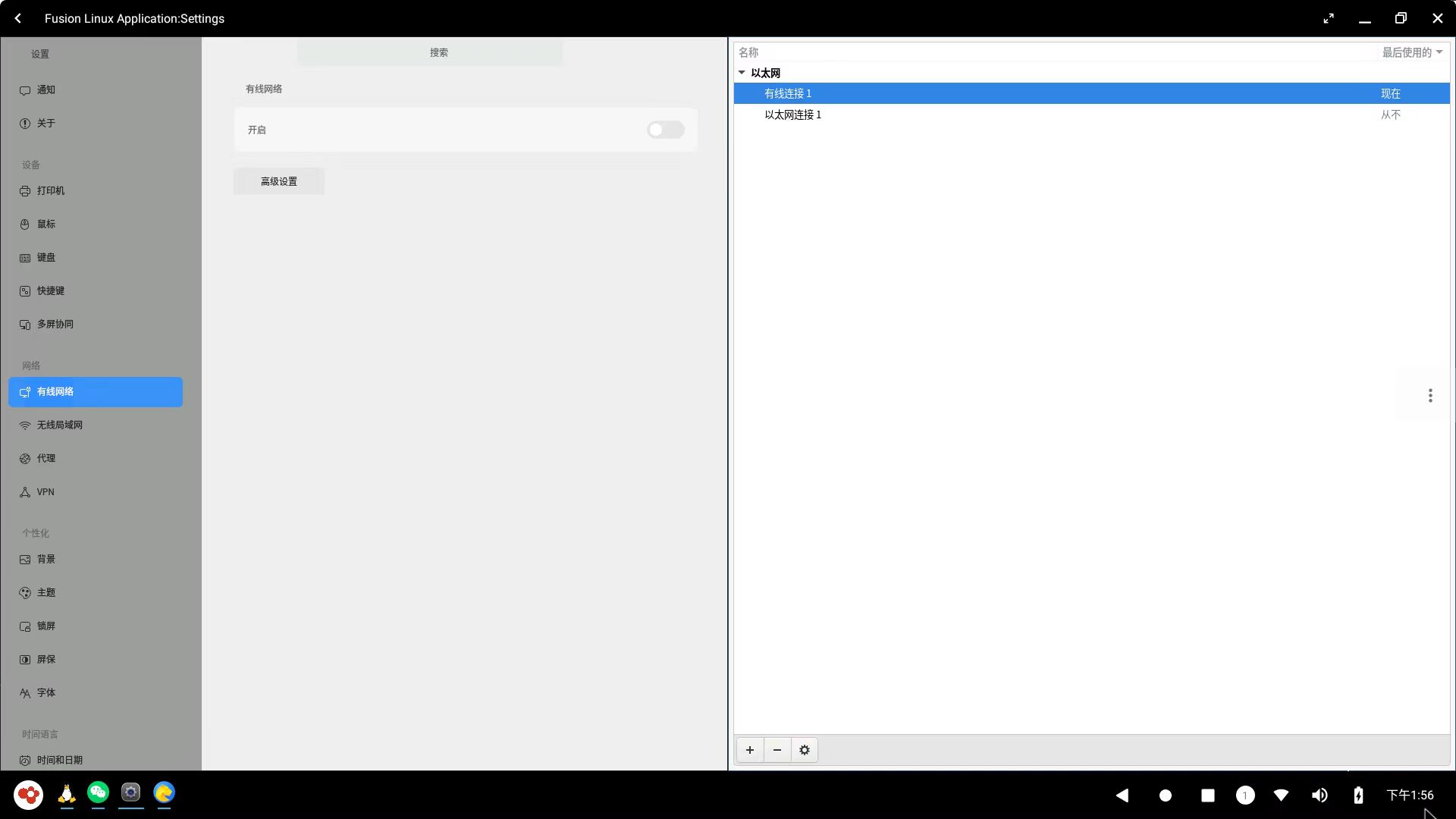
4.3.2 Wireless Network Configuration
In the wireless network settings, click on Advanced Settings. A pop-up window titled "Wireless LAN Settings" will appear on the right side.
- Add a New Wireless Network: To add a new wireless network connection, click on the "+" button located in the bottom left corner.
- Configure an Existing Wireless Network: select the desired wireless network connection, then click on the Settings button located in the bottom left corner. This will open a window where you can modify the configuration of the current network connection.
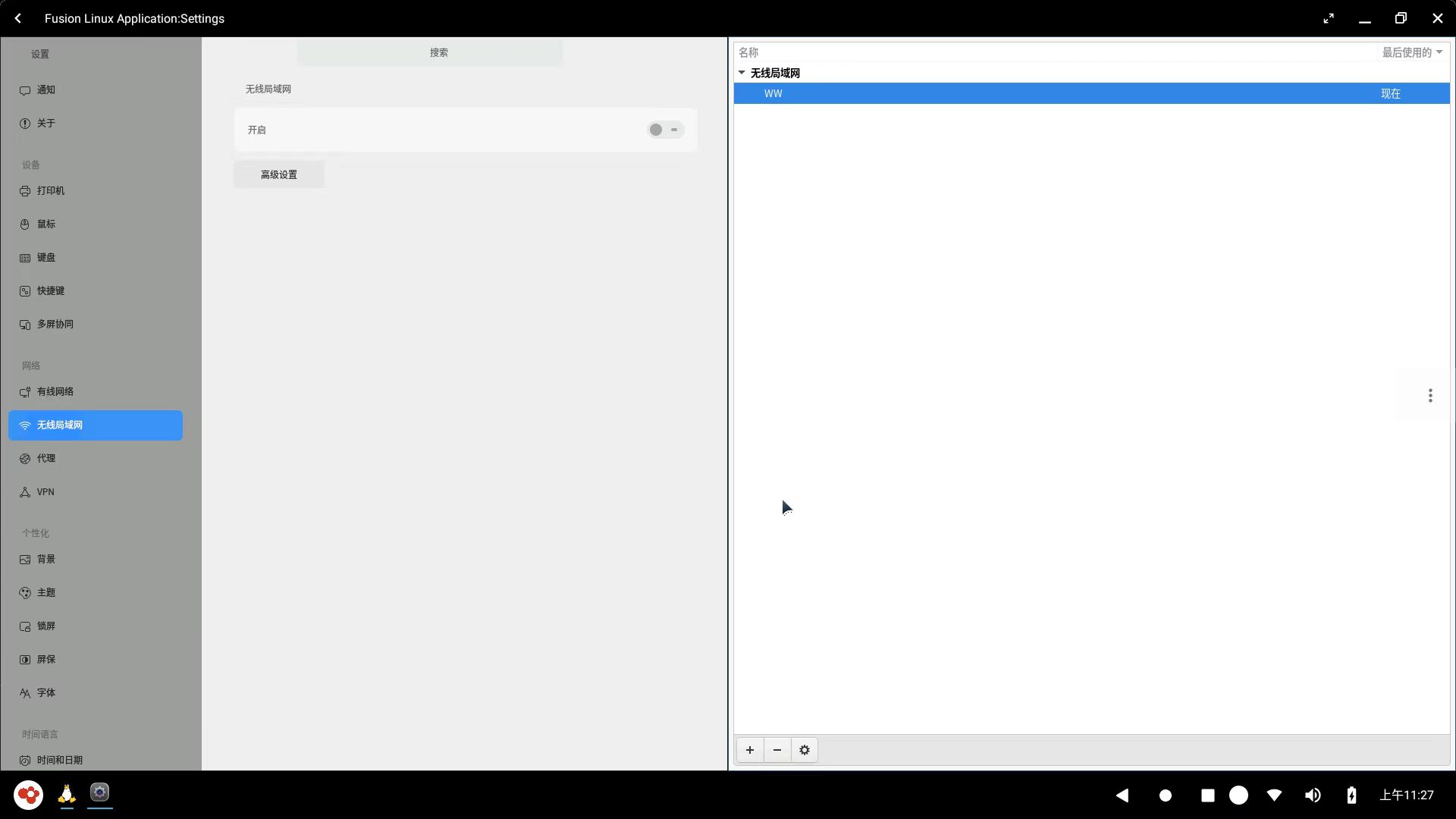
4. File System Fusion
OpenFDE facilitates the fusion and interoperability of the Android and Linux file systems, allowing seamless access and interaction between the two. This integration enables mutual access to files and folders between the Android and Linux file systems, providing users with the convenience of sharing files and data between both environments.
(1) access Android files from the Linux file system
To open the Linux file system manager in the Linux Fusion Desktop, follow these steps:
- Open the Linux Fusion Desktop by clicking on the penguin icon "Fusion Linux Application" in the Start menu.
- Locate the application called "Peony" in the application list.
- Click on "Peony" to open the Linux file system manager.
- Once Peony opens, you can navigate through the Linux file system, access files and folders, and perform various file management tasks like copying, moving, deleting, and creating directories.
Peony is a Linux file manager that provides a graphical interface to explore and manage files within the Linux environment.
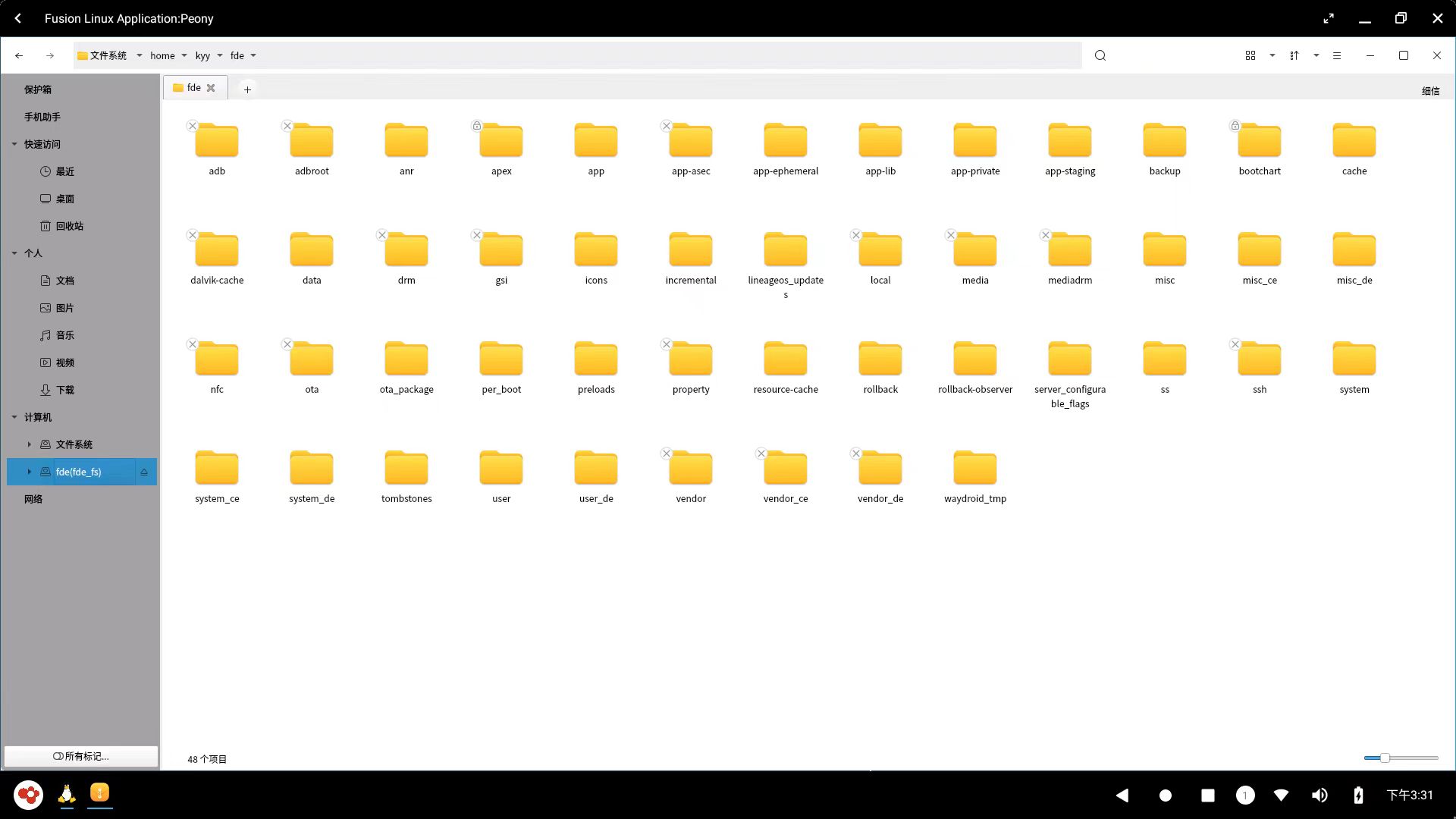
There are two ways to access the Android file system:
- Access Directly: Simply click on "Computer - OpenFDE" on the left side to directly open the Android file system. Click on specific folders to access them.
- Access Indirectly: Click on "Computer - File System" to access the /home/username/openfde, which will take you to the Android file system.
Attention: the "openfde" directory is a system-provided directory under the current user. If the user has created their own directory with the same name, they will be unable to access the Android file system.
(2) access Linux files from the Android file system
Open Start Menu, and open "File" application. This will open the Android file manager.
Click on the "Linux Volume" option in the left sidebar or toolbar to access the Linux system's files.
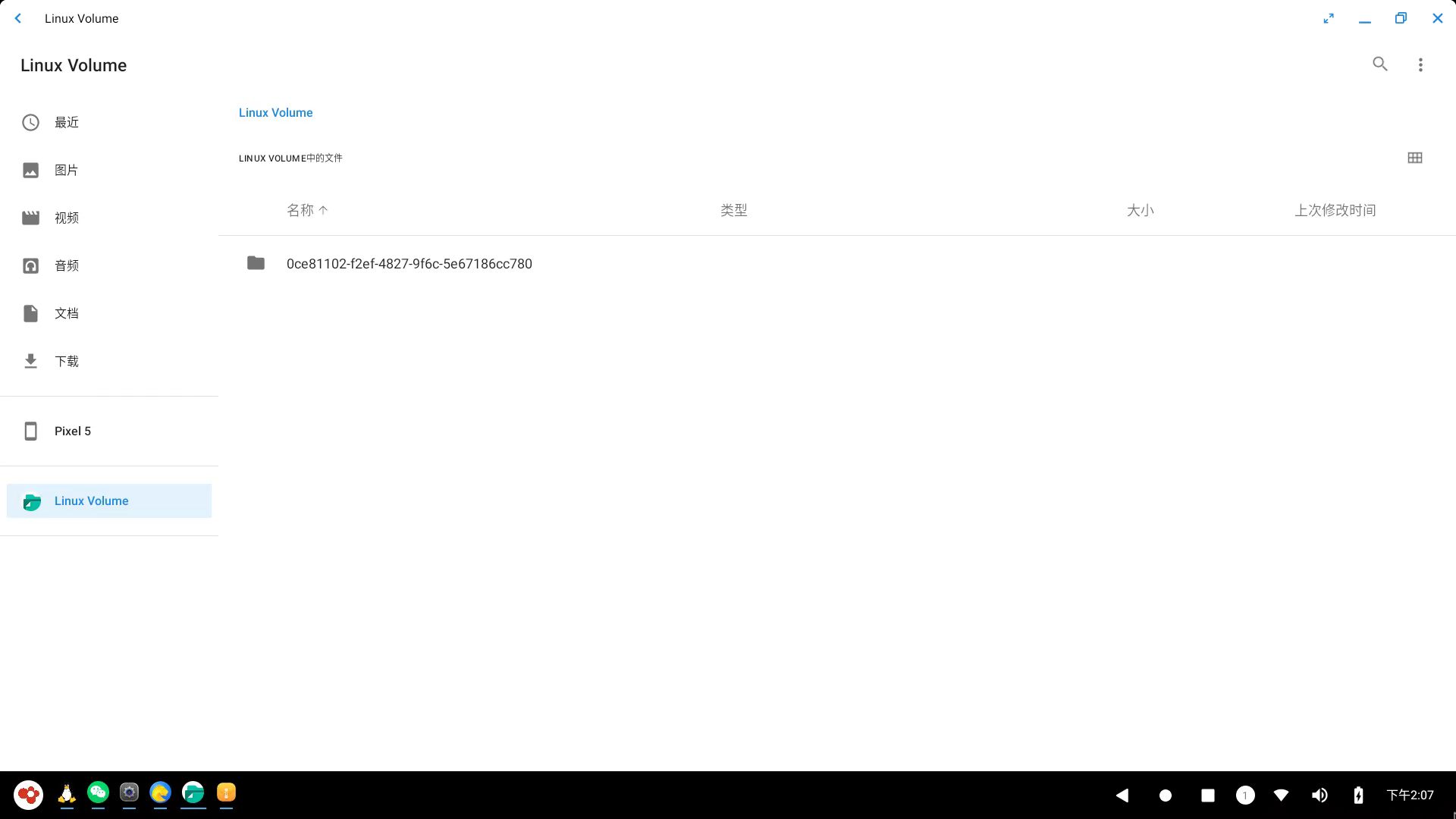
5. Develop Tools
In OpenFDE, Android application developers using Android Studio no longer require an Android Virtual Device (AVD). Instead, users can simply select the "Google Pixel 5" device within Android Studio to directly connect to OpenFDE. This allows developers to develop Android applications and debug them simultaneously within OpenFDE, providing a seamless development and testing experience.